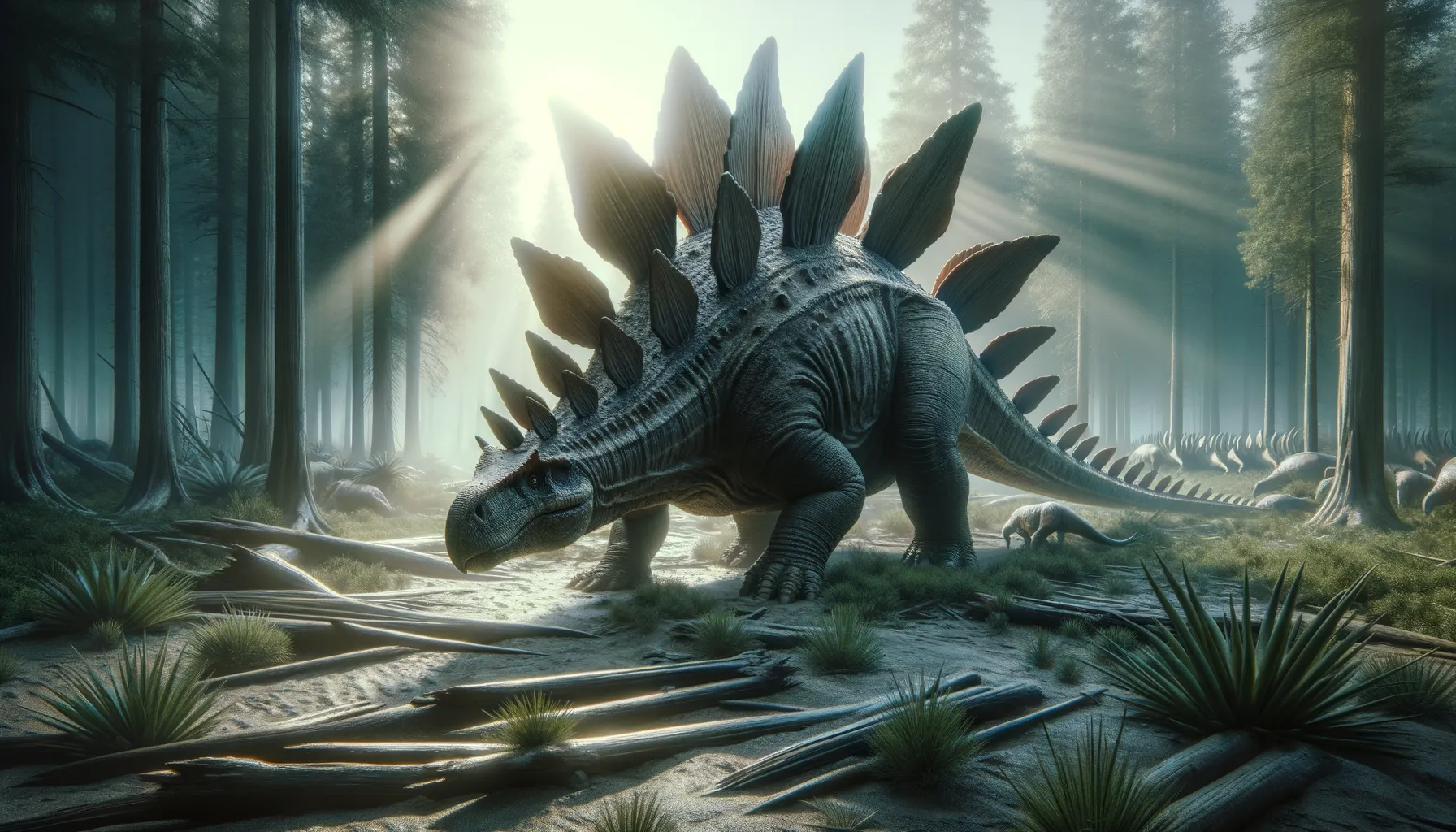
Stegosaurus
Iconic plates from the Jurassic era.
Period
Jurassic
Length
Measured roughly 9 meters long.
Height
Stood about 4 meters high.
Weight
Weighed up to 5 tons.
The Stegosaurus is one of the most recognizable dinosaurs due to its distinctive double row of kite-shaped plates along its back and long spikes on its tail. It lived during the Jurassic period, primarily in what is now North America. Despite its formidable appearance, the Stegosaurus was a herbivore, reaching lengths of about 9 meters and has become a symbol of the Jurassic era's majestic creatures.
Diet
The Stegosaurus was herbivorous, feeding primarily on low-lying plants and shrubs. It used its beak-like mouth to strip foliage and likely relied on its gut to digest tough plant material.
Hunting
As a herbivore, the Stegosaurus did not hunt other animals. Instead, it foraged for plant material, using its body size and spiked tail for defense against predators.
Environmental challenges
Stegosaurus faced challenges from climate shifts and possible volcanic activity that could alter its habitat. Additionally, competition for food with other herbivorous dinosaurs might have posed threats. Predators such as Allosaurus may have preyed on Stegosaurus, forcing constant vigilance.
Speed
Slow-moving, likely under 7 km/h.
Lifespan
Estimated to be around 70 to 100 years.
First discovery
First discovered in Colorado, USA, in 1877.
Fun Facts
- Stegosaurus is easily recognizable due to the large bony plates along its back and the spikes on its tail.
- Despite its fierce appearance, Stegosaurus was an herbivore and primarily fed on plants.
- Stegosaurus lived during the Late Jurassic period, around 150 million years ago.
- This dinosaur had a small head and brain, which was roughly the size of a walnut.
- Stegosaurus could grow up to 30 feet long, but its brain was only about 3 ounces in weight.
- The tail spikes of Stegosaurus are often referred to as a 'thagomizer' after a Far Side comic popularized the term.
- Fossils of Stegosaurus have been mostly found in North America, in states like Colorado and Wyoming.
Growth and Development
It is believed that Stegosaurus hatchlings were relatively small and grew steadily throughout their lives. Juveniles likely stayed in groups for protection, growing their iconic plates and spikes as they matured. These physical developments might have contributed to their survival against predators.
Habitat
Stegosaurus thrived in semi-arid environments with distinct wet and dry seasons. Such habitats provided a mix of conifer forests and open fern prairies. These dinosaurs relied on areas rich in vegetation to support their herbivorous diet, frequently migrating to follow seasonal food availability.
Interaction with other species
Stegosaurus coexisted with various dinosaurs such as Allosaurus, Diplodocus, and Camptosaurus. Predatory species pressured Stegosaurus to develop defensive mechanisms, while herbivorous contemporaries competed for food. These interactions shaped its behavior and group dynamics over time.
Natural lifespan
Stegosaurus likely had a natural lifespan ranging from 70 to 100 years.
Reproduction
Stegosaurus reproduced by laying eggs, likely in nests they constructed. These eggs would have formed small clusters in protected areas to shield them from predators. Parental care for hatchlings is suspected, but the extent remains a subject of research.
Social behaviour
Stegosaurus may have lived in small herds, as this provided safety in numbers, particularly against predators. Social behavior might have included communication through visual displays using their distinctive plates and tail spikes. These interactions may have played a role in mating rituals and establishing hierarchies within groups.
Fossil locations
Fossils of Stegosaurus have primarily been found in the Morrison Formation of North America, particularly in states like Colorado and Wyoming. These sites provide rich insight into the Jurassic ecosystem and are still pivotal in understanding dinosaur behavior and biology. Its remains have helped clarify the environmental conditions the Stegosaurus and its contemporaries faced.
